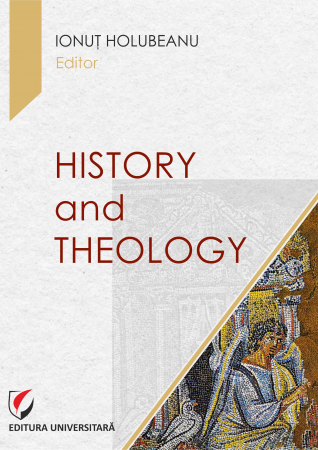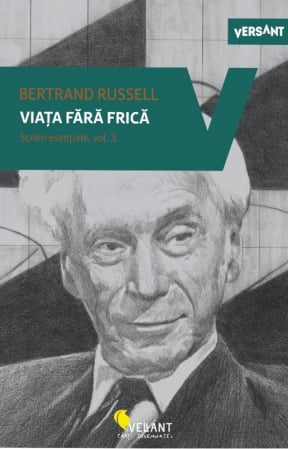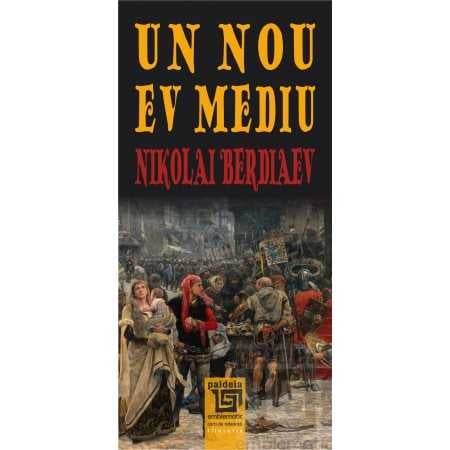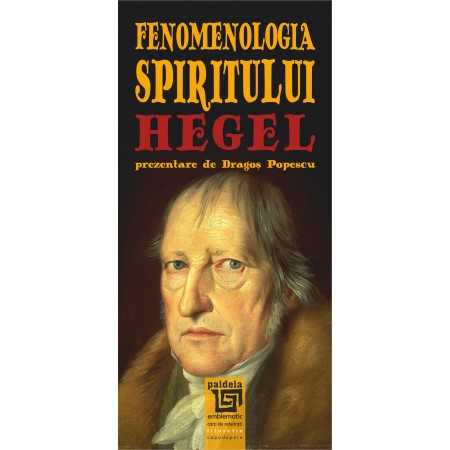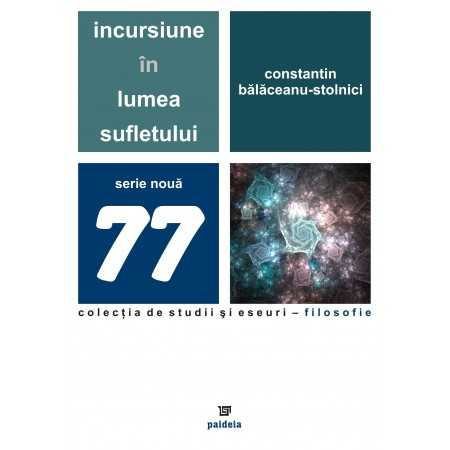ISBN: 978-606-28-0563-0
DOI: 10.5682/9786062805630
Publisher year: 2017
Edition: I
Pages: 212
Publisher: Editura Universitară
Author: Viorica Avram
- Description
- Download (1)
- Authors
- Content
- More details
- Reviews (0)
The Christian-Orthodox religious sermon represents a unique discourse through its double reporting: vertically to the divinity, and horizontally to the parishioners gathered at the service. This generates a certain focus of information, which must represent God, both in expression and form, but at the same time to reach the recipients and determine at their level a change in mood, how to think and act. Consequently, a combination of the sacred and the profane is required, in the sense of bringing the divine closer to the human, through the accessibility of decoding the evangelical message and especially by persuading listeners of the justice of the proposed models through religious preaching, considered "art for salvation."
The starting point of this paper is based on "the particularity of the didactics of being, simultaneously, the religious, oratorical and fictional work", as well as didactic.
-
LIMBAJUL PREDICII RELIGIOASE CRESTINE
Download
I.1. Transmitter / 12
I.2. Communicative intent / 15
I.3. Recipient / 17
I.4. Spatio-temporal circumstances / 18
I.5. Conclusions - Redefining the Christian-Orthodox religious sermon / 18
II. PREACHING - ARGUMENTARY SPEECH / 20
II.1. The functional peculiarities of the Christian-Orthodox religious sermon / 20
II.2. The formal peculiarities of the Christian-Orthodox religious sermon / 21
II.2.1. Orientation of the speech towards the recipient / 22
II.2.2. Exploitation of the default / 24
II.2.3. Situation at the level of probability, opinion, plausibility / 27
II.2.4. Updating certain logical relations (deduction, induction, analogy, causality) / 28
II.2.5. General argumentative scheme / 31
II.2.6. Capitalizing the notion of order / 2
II.3. Conclusions / 43
III. STRUCTURE OF CHRISTIAN - ORTHODOX RELIGIOUS PREACHING / 46
III.1. Homiletics - synthetic presentation (Homiletics / Rhetoric) / 46
III.2. Rhetorical structure of Christian-Orthodox religious preaching / 51
III.2.1. General considerations / 51
III.2.2. Exordium / 53
III.2.2.1. Types of exordium in Christian-Orthodox religious preaching / 53
III.2.2.2. Organization of the exordium / 54
III.2.2.3. Conclusions - making the exordium in synchrony and diachrony / 68
III.2.3. Confirmatio / 70
III.2.3.1. Confirmatio - general considerations / 70
III.2.3.2. Size logic Orthodox Christian religious sermon. Types of arguments / 71
III.2.3.3. Conclusions on the logical dimension of Christian-Orthodox religious preaching / 82
III.2.3.4. The affective-aesthetic dimension of Christian-Orthodox religious preaching / 84
III.2.3.5. Conclusions regarding the affective-aesthetic side of the religious discourse / 107
III.3. Thematic structure of Christian-Orthodox religious sermon / 108
III.4. Logical-rhetorical structure of Christian-Orthodox religious sermon (connectors) / 115
III.4.1. General considerations / 115
III.4.2. Typology and functioning of transfrastic connectors in religious sermon / 120
III.4.2.1. Argumentative connectors / 121
III.4.2.2. Pragmatic connectors / 123
III.4.2.3. Semantic coherence connectors / 124
III.4.3. Morphological value of transfrastic connectors / 126
III.4.4. Functional features of transfrastic connectors / 126
IV. CHRISTIAN-ORTHODOX RELIGIOUS PREACHING - “THE CONCRETE WAY OF MANIFESTING THE TEACHING SERVICE” / 135
IV.1. Languages / religious / church style / 135
IV.2. Christian - Orthodox religious sermon - the didactic variant of the church language / 138
IV.2.1. The finalities of the Christian-Orthodox religious sermon, as a didactic variant of the church language / 138
IV.2.2. Structural peculiarities of the Christian-Orthodox religious sermon - the didactic variant of the church language / 141
IV.2.3. Operational aspects of Christian-Orthodox religious preaching / 146
V. STEREOTYPE OF CHRISTIAN-ORTHODOX RELIGIOUS PREACHING / 152
V.1. Formal - functional stereotype of religious sermon as argumentative discourse / 152
V.1.1. Formal-functional stereotype in synchronic plan / 153
V.1.2. Formal - functional stereotype in diachronic plan / 167
V.1.3. Stereotype of the narrative sequence / 170
V.2. Stereotype of Christian - Orthodox religious preaching, as an explanatory discourse / 172
V.3. Stereotype of the background (content) of Christian - Orthodox religious sermons / 176
V.4. Conclusions ─ the relationship tradition - innovation at discursive level / 180
VI. CONCLUSIONS / 187
BIBLIOGRAPHY / 204
The Christian-Orthodox religious sermon represents a unique discourse through its double reporting: vertically to the divinity, and horizontally to the parishioners gathered at the service. This generates a certain focus of information, which must represent God, both in expression and form, but at the same time to reach the recipients and determine at their level a change in the mood, the way to think and act. Consequently, a combination of the sacred and the profane is required, in the sense of bringing the divine closer to the human, through the accessibility of decoding the evangelical message and especially by persuading listeners of the justice of the proposed models through religious preaching, considered "art for salvation."
The starting point of this paper is based on "the particularity of the didactics of being, simultaneously, the religious, oratorical and fictional work", as well as didactic.
From the very beginning, the study was faced with the problem of the lack of recent and consistent studies of homiletics, Vasile Gordon himself appreciating that "at university level Romanian homiletical literature benefits only from the treatise of Vasile Mitrofanovici, very well composed, but older than a century ”. To this treatise, dating from 1875, which obviously formed the basis of most subsequent books on homiletics, are added some studies from the early twentieth century: "The Church's Speech and Its Means (1902), by Nicolae Iancu, or The Study of Church Oratory (1907) by Dumitru Voniga, The Sermon and Its Benefits (1911), by Al. Petrescu-Cernica, Homiletics Course (1923), by George Arama, and some meticulously elaborated university courses, but with a closed circuit, as well as some recent studies, of which I draw attention New methods in the homiletical practice of Ioan Toader, Introduction to homiletics, by Gordon Vasile and General Homiletics and Special Homiletics, by Ion Bajau. Most recent homiletical studies present well the theoretical aspects related to general homiletics, but for the part of special (applied) homiletics, the authors limit themselves to the reproduction of sermons considered model, which they sometimes comment on several times.
To this bibliographic gap was added another, of the same order, but on the field of linguistics, namely, the small number of specialized works dealing with the language of church books, a single volume being devoted entirely to the subject: The language of church books, by Ioan Balan 1914. Of course, to this volume are added the histories of the literary language, articles and linguistic studies that relate to the church language as a whole, among which we mention: Gheorghe Chivu, Culture and civilization. Considerations on the current church language, Adina Chirila, Argument for a reconsideration of the religious style in Romanian, Liviu Onu, Christian terminology and the history of the Romanian language, Lidia Sfarlea, Delimitation of Romanian literary styles, Mihaela Mariana Morcov, Romanian religious language from sacred to profane . Terms introduced in the common and dialectal Romanian language and numerous recent or less recent studies that deal with specific aspects of the writings of a single preacher.
Another problem encountered was terminological, manifested in two directions. The first is that of the definition of the term sermon, to which none of the specialized dictionaries offers a complete definition, which imposed the redefinition and formulation, together with it, of a research hypothesis: sermon is argumentative-explanatory discourse. The second difficulty is that of the terminological differences between the phrases with which the language of church books is defined: biblical style, religious language, church language, the difference to which is added the very clear and unanimously recognized non-delimitation of such a language. referred to throughout the paper.
The research hypotheses from which it started concern the establishment of Christian-Orthodox religious sermon as argumentative-explanatory discourse, based on an instructional design subject to constraints of form and content imposed by rhetoric and homiletics and which generate a series of stereotypes; capturing the relationship between tradition and innovation at the level of homiletical discourse and demonstrating the fact that religious preaching is the didactic variant of church language. For this, a pragmatic-argumentative analysis was considered built on three levels: pragmatic (the functionality of each textual structure), argumentative (argumentative-explanatory particularities of the preaching discourse), linguistic (capitalization of linguistic resources to achieve religious goals).
To prove the hypotheses, a homogeneous corpus was used, represented by the sermons from the Sundays of the Triodion (Sermon of the Customs and Pharisees, Sermon of the Prodigal Son, Sermon on the Sunday of the Fearless Judgment, Sermon on the Sunday of Dry Cheese, Sermon on the First Sunday of Lent - Orthodoxy -, Sermon on the Second Sunday of Lent - St. Gregory Palamas -, Sermon on the Third Sunday of Lent - of the Holy Cross -, Sermon on the Fourth Sunday of Lent - on faith and doubt -, Sermon on Fifth Sunday of Lent - about vain glory and rage -, Sermon on the Sunday of Flowers) from five different centuries (sermons found in all the sermons under analysis: Coresi - Textbook, Varlaam - Cazania, Antim Ivireanul - Sermons, Zaharia Boiu - Seeds from the field of Christ - Church talks on all Sundays, holidays and New Year holidays, as well as at church houses, public and private. a– Sermons on Sundays over the year), the paper not being interested in their authorship, but only in the way in which the homiletic discourse is made. The option for this selection is justified by the need for a typological and thematic unity of the analyzed sermons, in order to obtain conclusive results regarding the relationship between tradition and innovation at the discursive level.
As the choice as reference writings for the 16th, 17th and 18th centuries is justified by the resonance of the preachers' names and the recognition of the value of homiletical works, we consider it necessary to explain only the option for the sermons of Father Zaharia Boiu (19th century). century) and of Archimandrite Cleopa (20th century). The election of Father Zaharia Boiu was determined, on the one hand, by the fact that he is considered the greatest preacher of Transylvania, a scholar of the time, priest, pedagogue, poet, with a special cultural and socio-political activity, while the choice for the writings of Father Cleopa, was dictated by totally opposite considerations, namely, the fact that, although he was a simple peasant son, who attended only primary school, the father became the most prolific homiletical writer of his time, an extreme priest. to be loved and appreciated. Consequently, I considered that his entire homiletical work is the expression of the grace of this father, of the power of divine revelation, which, according to the Gospel, is the first emitter of all religious messages, the priest being only the voice that concretizes them. Therefore, Father Cleopa's sermons may stand alongside those of the great church orators, perhaps not by their literary value (although they should not be marginalized), but by their homiletical value (the one that matters). We cannot hide the fact that initially we were tempted to resort to the writings of Nicolae Steinhardt, but these, although they respect the features of the homiletic argumentative-explanatory discourse, are not constituted as authentic sermons, but rather as essays on Christian homiletics. However, the features of his writings and of some preachers of the 20th century (Boris Raduleanu - Sunday of the Publican and the Pharisee, Sunday of the Cross, Teofil Paraianu - Sunday of Flowers, Ilarion Felea - Sunday of Orthodoxy, Constantin Galeriu - 3rd Sunday of Lent , Dumitru Staniloae - Falling from Heaven, Falling from Love) were analyzed in the last chapter of the paper, to complete the picture of the relationship between tradition and innovation in Christian-Orthodox religious preaching. The organization of the work is a gradual one, the work being revealed gradually, one chapter generating the other. There are two supposed study directions: a theoretical direction and an applied one. The approach was a deductive one, starting from examples concentrated in such a way as to reveal the scientific vein, so that in the end to reach generalizations, with the value of predicative patterns. The first chapters deal with the capture of the particularities of organizing the homiletic discourse, under argumentative, thematic and logical-rhetorical aspect, so that in the following chapters the formal and content stereotype of the sermon is demonstrated.
At the same time, the evolution of religious sermon was followed, which made it clear that diachronically (generally speaking) the differences between sermons are manifested more in quantitative than qualitative, and innovations are very much related to the personality of the preacher. This is, in fact, the conclusion of the fifth chapter of the paper, which based on statistics, showed that the sermon is a conservative discourse, but not completely closed, because it allows many individual innovations.
The fourth chapter of the research demonstrates, appealing to interdisciplinarity, the didactic-pedagogical valences of the preaching act which has an educational design, constituting itself certainly in the “concrete way of manifestation of the didactic service” In the chapter dedicated to the conclusions, the paper aims to highlight the aspects that lead to the success and efficiency of the homiletical discourse, in order to outline the pattern of a successful sermon.

6359.png)
![The Language of Christian Religious Preaching [1] The Language of Christian Religious Preaching [1]](https://gomagcdn.ro/domains/editurauniversitara.ro/files/product/large/limbajul-predicii-religioase-crestine-451-207673.jpg)


